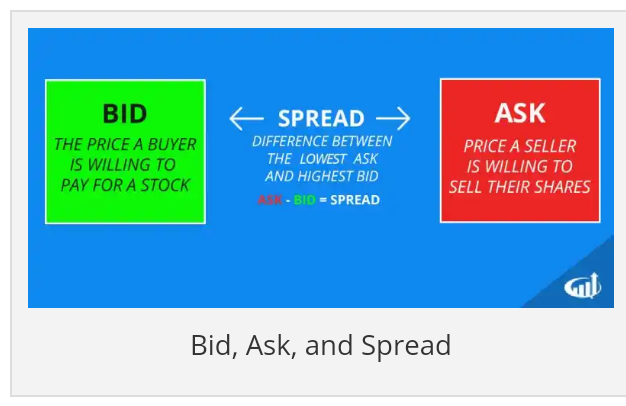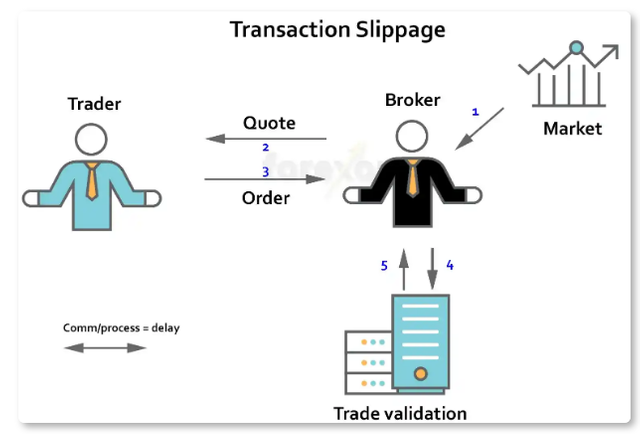Steemit Crypto Academy / Season 4 / Week 1 - Homework Post for @awesononso – Bid–Ask Spread
It is so nice to be a part of this season 4 cryptoacademy. Thanks to the steemit team and the professors for this wonderful privilege. In this episode, I have learnt about Bid-ask spread and slippage which I didn't really know about. All thanks to professor @awesononso for this one. Below is my homework task. Please join me.

Introduction
Trading on any platform requires a negotiation in the part of both the buyer and the seller. Once the seller sets his price (Ask price) and the buyer also sets his (Bid price), the gap between the two prices constitutes The Spread. This spread will therefore determine the level of liquidity of such market. It is also possible that prices do change between the period of initiating a trade and when the trade is executed. Such changes also constitute what is known as slippage. These terms are of great essence to traders hence, there is need to study them in detail.
1. Bid-ask spread
In every trading activity, there must be a buyer and a seller and they both have their own favorable price in which they want to buy or sell. Often, there is a difference in these prices. The lowest price at which a seller is willing to sell is referred to as the ask price, while the highest price at which the buyer is willing to buy is known as the bid price. The bid-ask spread is therefore the difference between the seller's ask price or offer price and the buyer's bid price. It can also be explained as the amount of the ask price in excess of the bid price. Market makers use the spread to offset their risk. For instance if the seller wishes to sell his assets at $55 ask price and the buyer is willing to buy at $54 bid price, "The Spread" will be $1 that is $55 - $54 = $1.
2. Importance of the Bid-Ask spread
The bid-ask spread is used to determine the level of liquidity of a market. If a cryptocurrency market has a lesser or very minimal spread, it implies that the market is highly liquid. Conversely, if the spread is larger, it implies that the market is highly illiquid, meaning that the trading will occur less frequently than in a liquid market.
An illiquid market indicates that there is a lower trading volume as a result of the differences in the opinions of the buyers and the seller. For instance, in a stock market, The spread is used to measure the liquidity of a stock as liquidity will enhance more trade and attractive prices.
Also bid-ask spread as mentioned earlier may be used to offset risk. This happens when an investor is being protected from incurring trading costs of an individual.
Question Three
If Crypto X has a bid price or $5 and an ask price of 5.20
A) The bid-ask spread will be;
Ask price - Bid price
= $5.20-$5 = 0.20
B) In percentage =
(Spread/Ask price)×100
= (0.20/5.20)×100
= 0.0385 × 100 = 3.85%
Question Four
If Crypto Y has a bid price of$8.40 and an Ask price of $8.80, the Bid-Ask Spread will be;
Ask price – Bid price
= $8.80 – $8.40 = 0.40
In percentage =
(Spread/Ask price)×100
= (0.40/8.80)×100
= 0.0455×100 = 4.55%
Question Five
Crypto X has a higher liquidity because it has a smaller Bid-Ask spread both in amount and in percentage than that of Crypto Y.
6. Slippage
Slippage is the process by which a trade is executed at a price different from what the trader had intended. In cryptocurrency trading, a trader can place an order to buy or sell at an existing price. However, before the trade is executed, prices can change due to the volatility of cryptocurrency assets and the prices could swing upward or downwards. These changes in price between the order and execution time is known as Slippage. Slippage could be favorable or unfavorable to a trader depending on the type if slippage that occur at the time.
A buyer may place an order for an asset at $20 and the order is executed when prices have changed to $21. This way, slippage is said to have taken place and such may not favor the buyer.
7. Positive and Negative Slippage
A positive slippage is one in which the order is executed at a more favorable price to the trader. This means that a seller would sell at a price higher than the intended price; and a buyer would buy at a price lower than the intended price or order price.
An example of a positive slippage
If a buyer places an order to buy Crypto X at $60 and the order is executed at $59, a positive slippage of $1 has occurred.
If a seller places a sell order for the same of Crypto X at $60 and the order is executed at $61.8, a positive slippage of $1.8 has occurred.
Negative Slippage
This occur when a trade is executed at a less favorable price than intended. For instance, a seller who sells at a lower price than what he expected would have to bear a negative Slippage.
An example of a negative Slippage
If a buyer places a trade to buy Crypto Y at $300 and the trade is executed at $302, a negative Slippage of $2 has occurred ($302 – $300 = $2).
Also, if a seller places a trade to sell Crypto Y at $300 and the trade is executed at $297, a negative slippage of $3 has occurred ($300 – $297= $3).
Conclusion
It is important to study the bid ask spread inorder to determine the level of liquidity of market. Liquidity is affected by the level of demand and supply and these sometimes affect prices. Further, understanding slippage is of utmost importance in trading. This will bring a trader to the knowledge that there is a risk associated with market order. It was great learning about this in this academy. Thank you so much for your time.

